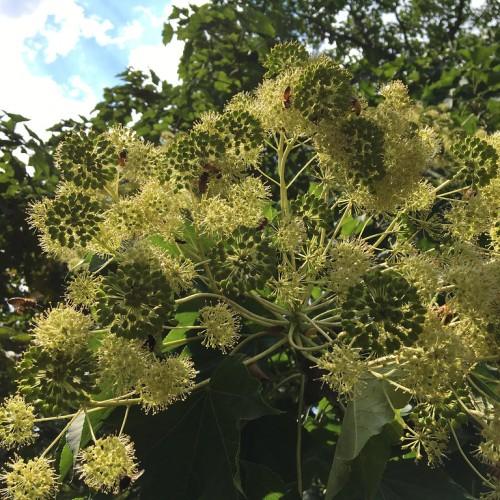
castor aralia
Kalopanax septemlobus
Cycle:
Perennial
Watering:
Average
Hardiness Zone:
4 - 7
Flowers:
Flowers
Sun:
Full sun
Leaf:
Yes
Growth Rate:
Low
Maintenance:
Low
Poisonous To Pets:
Yes
Drought Tolerant:
Yes
Care Level:
High
watering
Castor aralia needs regular watering, approximately once per week. The plant prefers moist soil and cannot tolerate drought conditions, so it necessary to water thoroughly when watering, ensuring the plant's root system is saturated with water. It is important to avoid over-watering, as this can lead to root rot. To determine when your castor aralia needs to be watered, feel the surface of the soil. When the top 1 to 2 inches are dry, it is time to water the plant. Water until it flows out of the pot's drainage holes.
sunlight
The Castor Aralia (Kalopanax septemlobus) plant species benefits from bright, indirect sunlight for 8-10 hours a day. A south-facing window with sheer curtains is ideal, ensuring that the sun's strength isn't overwhelming. Sunlight can be limited to mornings and evenings, rather than full day sun. Direct sunlight for extended periods of time can result in leaf scorch and damage. It is best to avoid direct sunlight in the hottest part of the day. To ensure the best growth, it is important to rotate the container of Castor Aralia slightly every week or 2. Doing so will expose all parts of the plant to sunlight, resulting in even growth and avoiding an awkward or lopsided form.
pruning
Pruning of Castor Aralia (Kalopanax septemlobus) should be done in late winter or early spring, before new growth begins. Generally, pruning should only be done to shape or size the plant, or to remove overly thick or sprawling branches. Only remove 1-third of the plant’s foliage each year. Avoid pruning the main trunk because Castor Aralia can suffer from diseases if their trunk is pruned too often or too vigorously. Make sure to use sharp, disinfected pruning shears to prevent accidental damage and contamination of the plant. Additionally, after pruning, it may be beneficial to apply a balanced fertilizer to stimulate healthy new growth.
